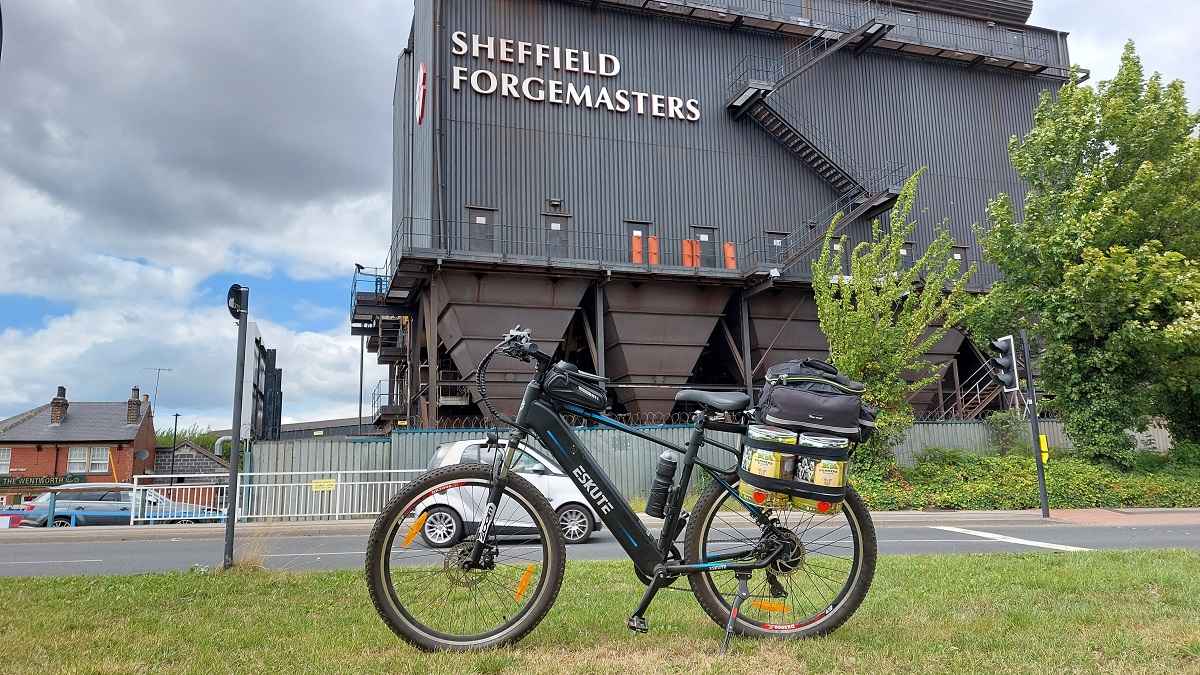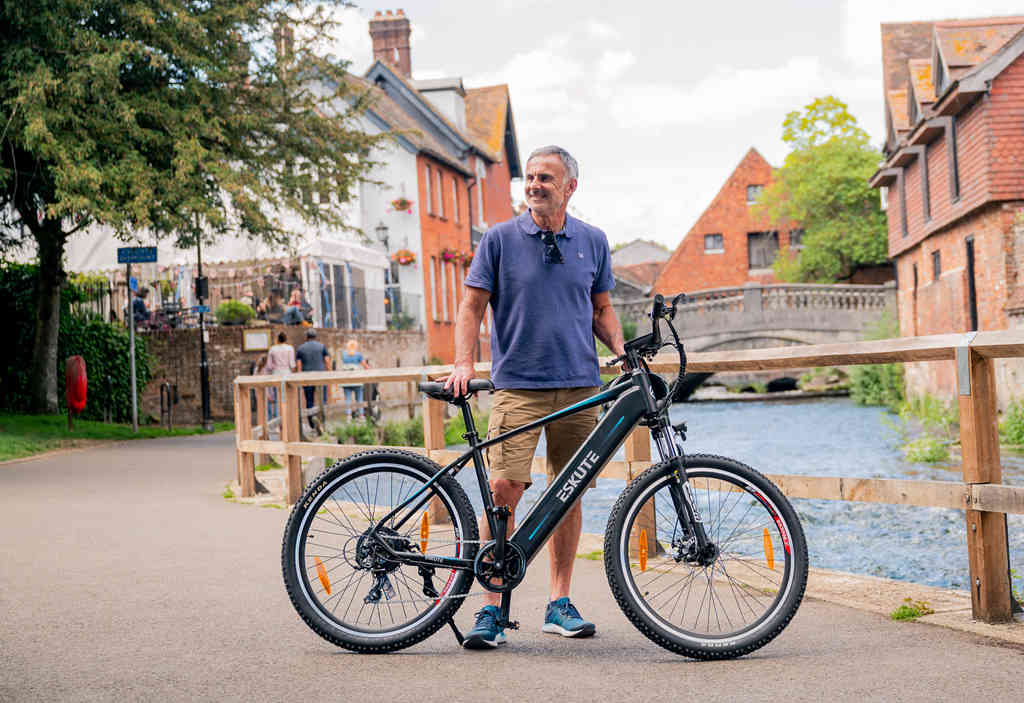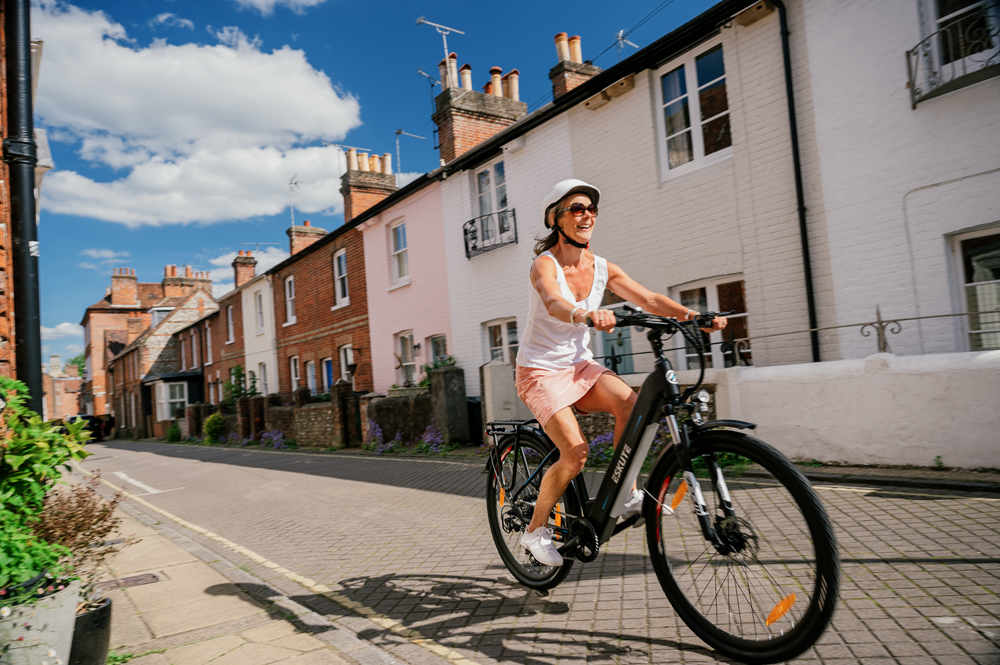Navigation
- Minimize Vibrations with Careful Placement
- Address Brake Rotor Alignment
- Choose Tires Wisely for Different Surfaces
- Prioritize Proper Chain Lubrication
- Ensure Secure Fastenings for a Quieter Ride
- Combat Brake Rotor Contamination Effectively
- Maintain a Clean E-Bike
- Replace Worn Components for Silence
- Engage the Rear Mech Clutch for Quiet Rides
- Fine-Tune Gear Shifter Tension for Silence
Electric bikes (e-bikes) have gained immense popularity for their convenience and eco-friendly nature. However, concerns about noise emissions from their motors have sparked discussions among riders. Now, we delve into the noise levels of electric bikes, the factors contributing to these sounds, and effective ways to minimize them.
Understanding Electric Bike Noise
Fortunately, the noise of e-bikes is not significantly different from that of regular bikes. While operating an e-bike, you may notice a faint hum from the motor and the sound of the tires rolling on the road. Comparatively, these noises are equivalent to those of conventional bikes and notably quieter than the rumble of motorcycles. Contrary to their gasoline-guzzling counterparts, electric bikes harmonize power and subtlety. But how noisy are they? The hum of the motor, akin to a whispered secret, is often eclipsed by the tire's rhythm against the road. This symphony culminates in an experience reminiscent of traditional cycling, with noise levels barely distinguishable from a conventional bike.

Addressing Questions About E-Bike Noise
Electric bikes, hailed for their efficiency and convenience, often trigger questions concerning noise levels emanating from their motors. This guide delves into the intricacies of e-bike noise, providing insights into its origin, impact, and ways to mitigate it.
E-Bike Decibels: Debunking the Myths
The volume of noise generated by e-bikes is a legitimate concern for riders. However, rest assured that the noise produced is generally comparable to that of traditional bikes. When in operation, you may detect a subtle hum from the motor and the familiar sound of tires on the road. This auditory experience mirrors that of a regular bike while maintaining significantly lower noise levels compared to motorbikes.
Dissecting Noise Sources: Under the Hood of E-Bikes
Understanding the origins of noise within e-bikes entails scrutinizing their various motor types. Different motors contribute distinct noises to the riding experience. Here are the primary sources:

Geared Hub Motor Noise
This type of motor offers a natural feel during pedaling, minimizing drag. Although they tend to emit slightly more noise when accelerating on pedal assistance, this noise is usually noticeable only in quiet surroundings.
Direct Drive Motor Noise
Found in larger, heavier electric bike motors, these motors generate noise when the outer shell spins during acceleration. Their placement on the front wheel can cause vibrations, contributing to noise.
Mid-Drive Motor Noise

Positioned at the center of gravity, mid-drive motors provide balance. They are relatively noisier than geared hub motors but quieter than direct-drive motors due to their internal location.
Tire Noise
As tires grip the road, friction produces natural sounds while cycling. Noise levels hinge on tire type and surface. Different treads result in varying auditory experiences.
The Ideal Decibel Range
Striving for Silence Determining the ideal noise level for an electric bike can be challenging. Premium models often boast quieter motor systems, while lower-cost alternatives or conversion kits may generate more noise due to design compromises.
E-bike noise is contingent upon the motor style, yet it should never exceed the modest noise generated by a standard bike. To ensure your e-bike maintains acceptable noise levels, consulting a professional for assessment is advised. Test-riding different models before purchase also provides valuable insight into expected noise levels.
Strategies for Quieter Rides
When e-bikes become excessively noisy, specific components may require adjustment or repair. Consider these strategies to dampen excess noise:
Minimize Vibrations with Careful Placement
When considering motor placement, steer clear of front wheel conversion kits. Mounting the motor on the front wheel can potentially lead to vibrations that resonate through the fork, resulting in unwanted noise during your rides. Opt for rear wheel placement to avoid this issue and ensure a smoother, quieter cycling experience.
Address Brake Rotor Alignment
If you notice a clicking or rubbing noise while riding, your brake rotor might be the culprit. A bent or misaligned rotor can cause the brake pads to come into contact with it, resulting in noise. It's important to address the alignment issue promptly. You can either use specialized tools to carefully bend the rotor back into shape or seek assistance from a professional bike mechanic to ensure proper rotor alignment.
Choose Tires Wisely for Different Surfaces
The type of tires you use plays a significant role in determining the noise level during your rides. Tires with different tread patterns and compositions interact with various surfaces in unique ways, influencing traction and noise production. When selecting tires for your electric bike, consider the type of surfaces you'll be riding on most frequently. Smooth road tires are generally quieter on paved surfaces, while knobby mountain bike tires might produce more noise due to their aggressive tread.

Prioritize Proper Chain Lubrication
Chain maintenance is crucial for a quiet and efficient electric bike. Neglecting to lubricate your chain adequately can result in rust and increased friction, leading to noisy rides. Regularly apply the appropriate type of lubricant to your chain, ensuring it's evenly distributed and minimizing any potential for noise.
Ensure Secure Fastenings for a Quieter Ride
Loose nuts and bolts on your e-bike can lead to vibrations and rattling components, resulting in unwanted noise during your rides. Regularly inspect and tighten all fastenings throughout your bike, including those on the frame, handlebars, and other crucial parts. By ensuring everything is securely fastened, you can enjoy a smoother, quieter cycling experience.
Combat Brake Rotor Contamination Effectively
Squealing or unusual noises coming from the wheel hub area can often be attributed to contaminated brake rotor discs. If you've accidentally spilled lubricant on the rotors while lubricating the chain, the resulting noise can be bothersome. To remedy this, thoroughly clean the rotor discs and replace the brake pads if necessary. Ensuring clean and properly functioning brake components can contribute to a quieter ride.
Maintain a Clean E-Bike
A clean e-bike is not only visually appealing but also contributes to a quieter ride. Mud, dirt, and debris accumulation can lead to vibrations and noise, especially when these foreign particles become lodged in various parts of the bike. Regularly clean your e-bike, paying attention to hard-to-reach areas to prevent the buildup of materials that could lead to noise during rides.
Replace Worn Components for Silence
As components like cassettes and chains age, they can contribute to noise during cycling. A worn cassette, in particular, can cause the chain to skip between gears, resulting in noticeable noise. To resolve this issue, consider replacing both the chain and cassette simultaneously. This ensures that the drivetrain components work together seamlessly and quietly.
Engage the Rear Mech Clutch for Quiet Rides
If you've recently changed the rear wheel or performed maintenance on your e-bike, you might forget to engage the clutch on the rear mech. Failing to do so can lead to unnecessary chain noise and rubbing. Always remember to activate the clutch mechanism to prevent such noise-related issues.
Fine-Tune Gear Shifter Tension for Silence
A chain that frequently skips gears can generate noise and disrupt your ride. Adjusting the tension of the gear shifter cable can help mitigate this problem. Experiment with tightening or loosening the cable tension until you find the optimal setting where gear changes are smooth, and noise is minimized. Regular maintenance of the gear shifter ensures a quieter and more enjoyable cycling experience.

Whether you're commuting through the city streets, exploring scenic trails, or simply enjoying the freedom of two wheels, your e-bike's noise should be the least of your concerns. Armed with knowledge and equipped with practical solutions, you can confidently navigate the world of electric biking with a renewed focus on peace, sustainability, and the open road ahead.
The importance of regular maintenance cannot be overstated. Addressing issues such as loose nuts and bolts, contaminated brake rotor discs, and well-lubricated chains can significantly contribute to reducing noise levels. Remember, a well-maintained e-bike not only ensures a quieter experience but also prolongs the life of your components.
When choosing tires, opt for ones that suit your riding style and surface conditions. The type of tire and its tread pattern can influence the noise level as they interact with the road. Similarly, avoid front wheel conversion kits if you're aiming for a quieter ride, as they can lead to vibration-related noise.
While the occasional noise is a normal part of any mechanical system, addressing unusual clicking or rattling sounds promptly can prevent potential complications. Regularly lubricating your bike's chain is a simple yet effective solution to mitigate noise and prevent rusting.
FAQS:
1. Why does my electric bike make a clicking noise while riding?
- A clicking sound could be attributed to several factors. It might be due to cogging, debris inside the motor, or the need for an adjustment in the derailleur. If the noise persists, it's recommended to consult a professional for inspection.
2. How often should I lubricate the chain of my electric bike?
- Regular chain lubrication is essential for maintaining a smooth and quiet ride. Aim to lubricate the chain at least once a month to prevent noise and reduce the risk of rust.
3. Does the choice of motor affect the noise level of an electric bike?
- Yes, the type of motor can influence the noise level. Geared hub motors tend to be quieter, while direct drive motors might produce more noticeable sounds due to their larger size. Mid-drive motors strike a balance between the two. Regular maintenance also plays a role in noise reduction.
4. How can I make my electric bike quieter?
- To minimize noise, consider avoiding front wheel conversion kits, tightening loose components, selecting appropriate tires, lubricating the chain, and adjusting the gear shifter tension. Regular maintenance and choosing higher-quality components can contribute to a quieter ride.
5. Are electric bikes noisier than traditional bikes?
- No, electric bikes produce only a modest level of noise, similar to that of regular bikes. The hum of the motor and the sound of tires on the road blend seamlessly to create a harmonious soundscape. Unlike motorcycles, the noise is subtle and in tune with the cycling experience.
Conclusion
the noise produced by electric bikes is generally minimal and should not overshadow the numerous benefits they offer. By making informed choices regarding motor type, maintenance routines, and component adjustments, you can tailor your e-bike experience to align with your preference for a quieter ride. As you navigate the world on two wheels, remember that your e-bike's noise, or lack thereof, is just one element of the remarkable journey you're undertaking – a journey toward sustainable mobility, adventure, and newfound freedom with ESKUTE by your side. Embrace the whisper-quiet thrill of the open road as you ride your ESKUTE e-bike, ensuring that every ride is not only noise-free but also an experience that embodies our commitment to innovation, quality, and the joy of effortless exploration.














Leave a comment
This site is protected by reCAPTCHA and the Google Privacy Policy and Terms of Service apply.